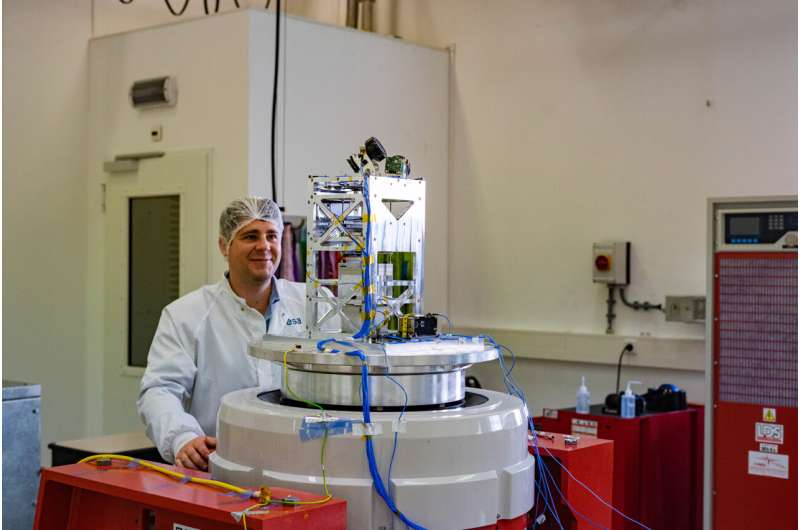This article has been reviewed according to Science X's editorial process and policies. Editors have highlighted the following attributes while ensuring the content's credibility:
fact-checked
trusted source
proofread
Flying first on Ariane 6

With Europe's new Ariane 6 rocket now at its spaceport in French Guiana, the passengers it will launch to space are getting ready to be added to the top of the tall new rocket. Ariane 6 will launch several satellites, deployers and experiments from space agencies, companies, research institutes, universities and young professionals on its first flight.
"Ariane 6 is designed to be versatile, offering space actors bespoke launch options all while keeping costs down," says Michel Bonnet, head of Ariane 6 missions and system engineering and ESA's lead for the Ariane 6 inaugural flight. "The varied missions launching on the first flight, from nine countries and dozens of organizations, are a perfect demonstration of the team spirit behind this rocket and the design ethos that underpins it."
From established players like NASA to students designing their first ever satellite, these missions will measure gamma rays, track wildlife, test self-healing solar cells, confirm the theory of black body radiation and more. There's a smart-farming satellite, a radio beacon demonstrator, experiments that will remain attached to the rocket's payload "adaptor" and even capsules destined to reenter Earth's atmosphere to test new materials—Ariane 6's first flight will be packed with technology as its first payloads are sent on their way into space.
This plethora of missions is being supplied by three types of organizations: commercial companies, space agencies and universities. Together they have been building hardware to test and prove their technology works in space; satellites to measure weather on Earth or in the solar system; study the sun and perform other science experiments.
Ready, set, deploy
Four deployers, including the multi-CubeSat deployers RAMI and EXOpod, will release satellites away from the Ariane 6 upper stage.
The two reentry capsules and nine satellites that are set to fly free are placed at the top of the rocket in order of their release, perfectly timed to be set on their way after leaving their Ariane 6 nest, 600 km above Earth.
Cubesat deployers are like mini launchers in their own right, orchestrating a series of spring-loaded ejections to shoot one or multiple miniature satellites from the Ariane launcher at the right time, speed and in the right direction to set them on their way. As the CubeSats don't have their own propulsion, they will stay in the same orbit Ariane 6 releases them into.
Many missions
Not all the missions will fly free. One mission, YPSat, will stay attached to the upper stage of the Ariane 6 to record the whole mission from launch to end. Four other experiments will remain fixed, performing their work for the duration of the rocket's flight and returning altogether in unison, like skydivers holding tight for their Earth descent.
"The first flight of a new rocket is always an astounding moment as there are hundreds of thousands of details that have to work in perfect harmony—for the first time together in full," says Loïc Bourillet, head of ESA's Collective Launch Service Procurement.
"Rather than only launching an inert dummy payload as a stand in for larger satellites, we have a large platform that also offers a unique opportunity to accommodate smaller, data gathering payloads. I am incredibly pleased with the scale of space hardware that has been designed and built. It's a testament to the inventive minds of our generation."

All eyes on Ariane 6
ESA's young professional satellite, YPsat, will take pictures and video of the Ariane 6 rocket itself once it flies free. Tatjana Mandil, a communications officer for YPsat when she is not working as a trainee engineer on lunar Gateway modules, says "A launcher's first flight is always much anticipated and attracts lots of attention. It is going to be wild to know our team's satellite is at the top of ESA's new rocket, and we hope to add to the spectacle when we can share the video of the satellites releasing into Earth orbit."
Each passenger will be highlighted in an individual article over the next few months.
Provided by European Space Agency





















